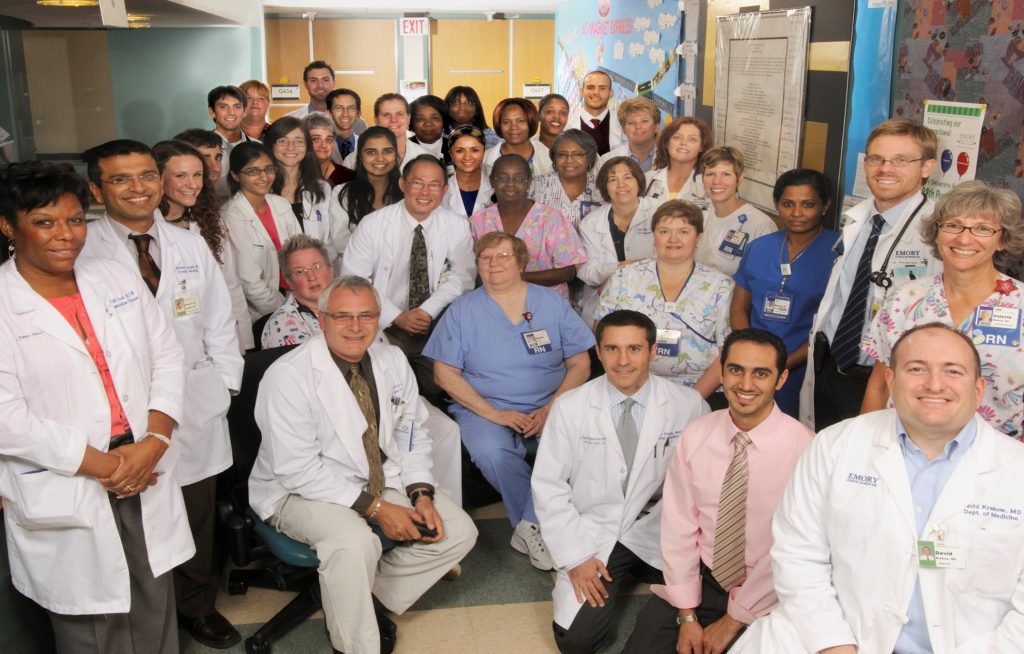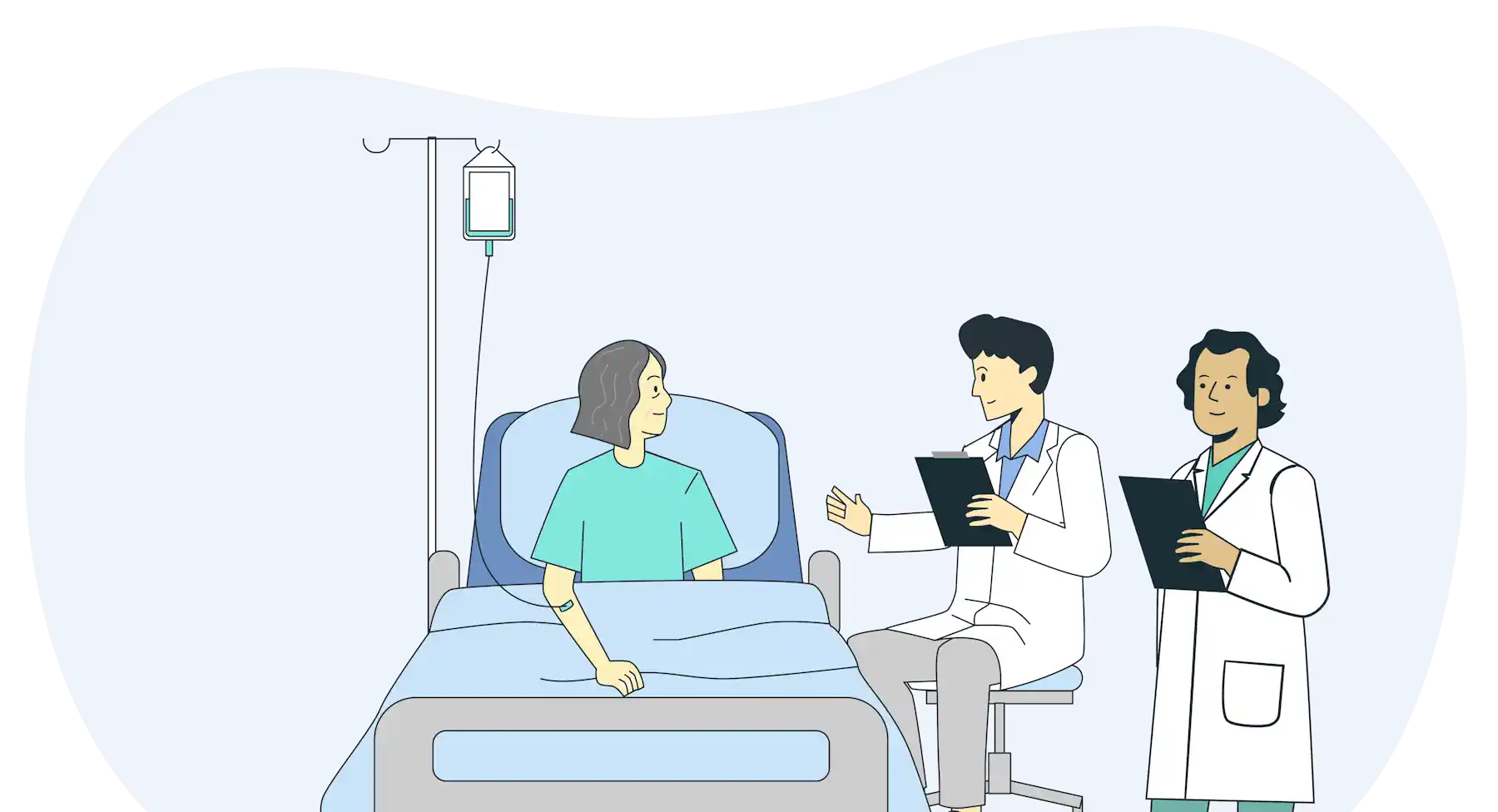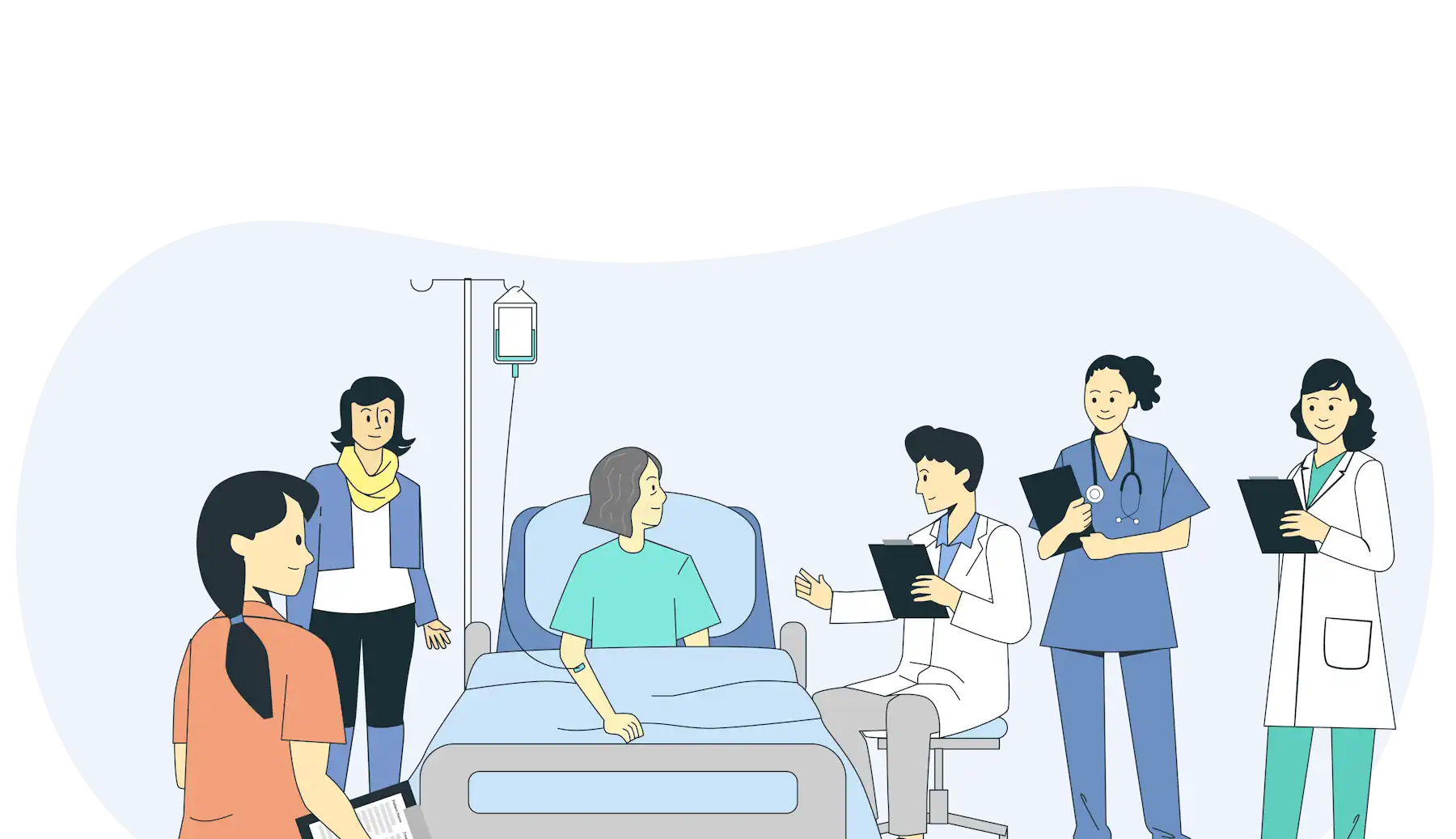Guide To Team Rounds
Multidisciplinary Rounds (MDRs)
Definition: In MDRs, the healthcare team discusses patients outside the patient’s presence, typically at a centralized location such as a nursing station or conference room.
Participants: MDRs are often brief “run the list” huddles between lead provider, case manager, and charge nurse, with a primary focus on discharge planning. Bedside nurses on the unit rarely attend MDRs, and if they do, they rarely have an active role.
Impact: Apart from these huddles, care providers in an MDR model largely function independently, leading to potential gaps in shared comprehension and decision-making, with different groups of health care professionals often working in isolation and with the illusion of teamwork.[10][11]
Timing: MDRs can occur in the morning and/or afternoon
- Morning MDRs focus on patients to discharge that day
- Afternoon MDRs focus on patients to be discharged the following day.
The actual execution of MDRs can vary from hospital to hospital and unit to unit. There is no official academic definition of multidisciplinary rounds.
Medical Rounds
Definition: In Medical Rounds, also known as Ward Rounds, Attending Rounds, and Safari Rounds, the lead provider rounds on his or her patient at the bedside. When conducted on a teaching unit with residents and interns, the focus is on medical education for the trainees.
Participants: Medical Rounds can be conducted alone, or with a team of physicians, including junior doctors and medical students. If bedside nurses and other allied health professionals join, it’s typically to observe and listen in.
Timing: Medical Rounds typically occur in the morning
The actual execution of Ward Rounds can vary from hospital to hospital, unit to unit, physician to physician, and even day to day. Attending Rounds have been called the “The HumptyDumptification of Medical Discourse” because of the nonstandard nature of what’s covered.
Interdisciplinary Bedside Rounds (IBRs)
In contrast, Interdisciplinary Bedside Rounds aim to foster an integrated and collaborative approach to patient care. These rounds take place at the patient’s bedside and involve the lead provider, multiple other healthcare professionals, and the patient and their family.
During IBRs, the different professions engage in a collective dialogue, fostering a more comprehensive understanding of the patient’s condition, needs, and care plan. The inclusion of the patient and their family in the conversation also ensures that the care plan is tailored to the patient’s needs and preferences. Inputs shared forward from multiple stakeholders are readily synthesized together to form a cohesive plan of care.
Multiple studies have found that interdisciplinary teams consistently outperform multidisciplinary teams across most evaluated metrics. However, implementing successful IBRs can be challenging, leading to mixed outcomes.
Comparison and Consequences
MDRs, due to their absence of real-time, all-inclusive communication, can potentially result in missed cues, misinterpretations, and delays that negatively affect patient outcomes and satisfaction.
Conversely, IBRs aim to minimize these hazards by promoting shared decision-making, enhancing interprofessional communication, and placing the patient at the heart of their care. These factors collectively contribute to improved care coordination, patient satisfaction, and overall care outcomes.
Structured Interdisciplinary Bedside Rounds (SIBR Rounds)
A well-known model of IBRs is Structured Interdisciplinary Bedside Rounds, abbreviated as SIBR Rounds and pronounced “cyber.”
SIBR follows a six-step process to create a shared mental model of who says what, when, and in what sequence when a care team enters the patient’s room together. This structure is designed to ensure role clarity, consistency, efficiency, and sense-making.
History and Development of SIBR
The concept of SIBR was developed by hospitalist and quality expert Dr. Jason Stein and colleagues at Emory University Hospital in the early 2010s.
The SIBR model and its inventors have won several US national awards from the Society of Hospital Medicine and attracted international attention. The insights were recognized by the Centers for Medicare & Medicaid Services Innovation Center.
Numerous studies of various SIBR units have shown substantial improvements for clinical, throughput, cost and patient/staff experience and engagement outcomes, with some having failed to achieve desired outcomes.




